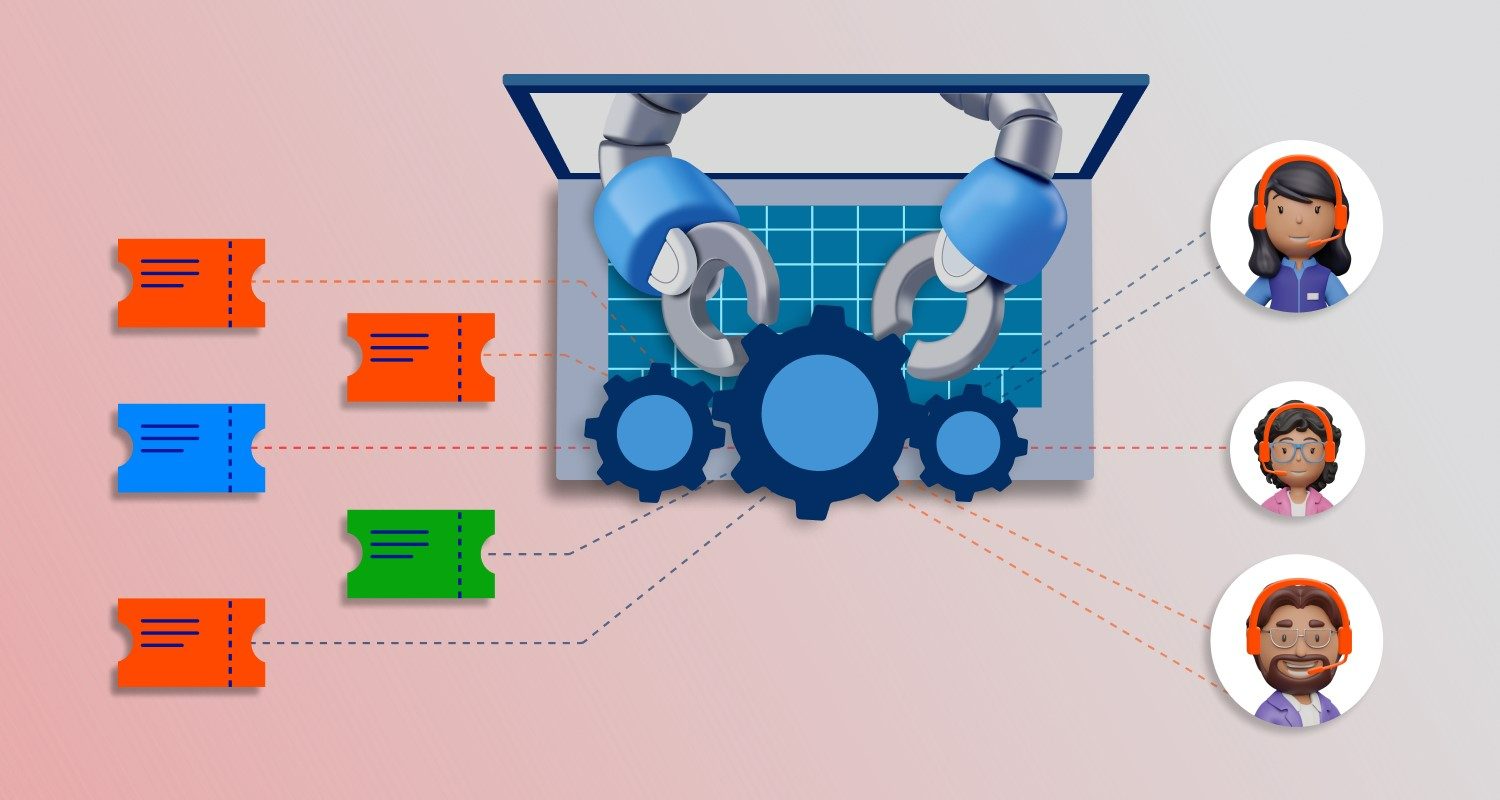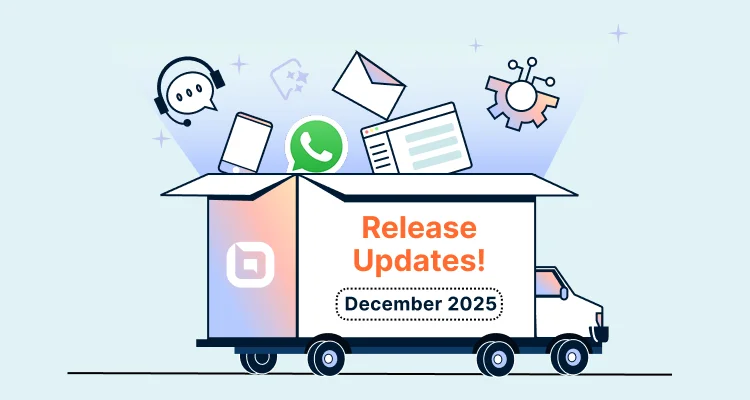In today’s fast-paced and technology-driven business environment, customers expect swift and effective support from the businesses they engage with.
Routing tickets to appropriate support agents quickly and accurately is a common challenge.
However, like for other system management procedures, using the appropriate ticketing software eliminates the need for doing this manually.
Investing in ticketing software system with automated ticket routing improves workflow, eliminates bottlenecks, speeds up responses, and ensures smoother operations.
What is ticket routing?
Ticket routing refers to the systematic process of assigning incoming tickets submitted by users to the most appropriate support individuals or teams within an organization.
Ticket routing can be conducted manually, which involves the physical assignment of support tickets to specific agents by hand. However, this manual approach to ticket distribution can be monotonous, inefficient, and prone to mistakes due to human oversight.
If you are overseeing the creation or expansion of a support system, it would be advisable to consider automating your ticket routing.
What is automated ticket routing?
Automated ticket routing is the process in customer support help desk systems where incoming support tickets are automatically assigned to the most appropriate agent or team for resolution.
Automated routing systems sometimes use artificial intelligence (AI) and natural language processing (NLP) to interpret the content of a ticket and route it accordingly.
More commonly, the routing is based on predefined criteria, such as the nature of the issue, the skillset or expertise of the agent, the urgency of the ticket, or the geographic location of the customer.
This automation helps to streamline the support process and enhance the overall customer experience by providing timely and accurate responses.
How automated ticket routing works
An automated ticket routing system is a modern technological solution that efficiently manages and directs incoming tickets within an organization.
An automated ticket routing system operates by:
- First, receive incoming tickets through various channels such as email, phone, or live chat. These tickets may be for customer inquiries, technical issues, or any other type of request or problem that requires attention.
- Second, the system’s algorithms analyze ticket content, considering factors like the nature of the issue, request urgency, and required skills.
- They make intelligent decisions based on predefined rules set by the organization.
- Once the system has determined the most appropriate destination for each ticket, it automatically assigns and routes the ticket to that department or individual.
- This ensures that tickets are promptly and accurately directed to the right personnel, minimizing delays, and ensuring efficient resolution.
How to automate ticket routing for your business
Automated ticket routing operates based on predefined rules and algorithms. Here are some tips for setting up your system.
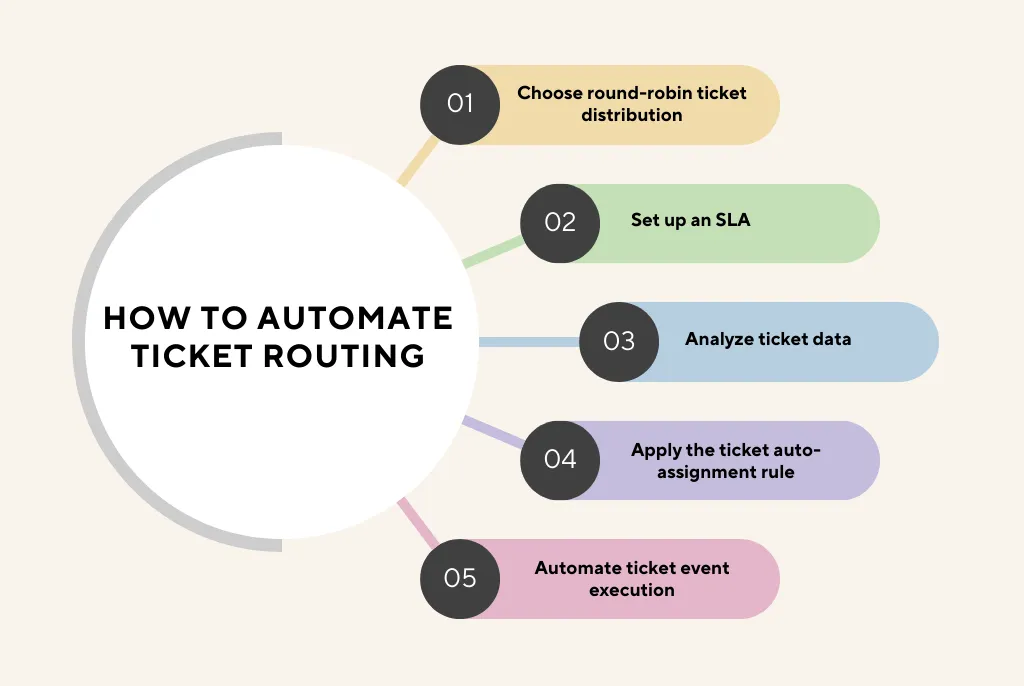
Choose round-robin ticket distribution
Use round robin logic to distribute simple tickets that any support agent can resolve evenly.
A round-robin system:
- Automatically assigns tickets to agents, which saves supervisors time.
- Checks the availability of agents before making an assignment, thereby preventing ticket assignment to agents who already have a heavy workload.
The basic functions of automated ticket routing are cutting down on the need for manual ticket assignment, reducing the risk of human error, and enabling a smoother workflow.
The foundation of this is a smart round-robin method.
Set up an SLA
As some tickets take more time to resolve than can be anticipated, round-robin distribution will never be perfect.
One way to mitigate this weakness is to set your system up with a service-level agreement.
SLAs are used to establish a more reliable workflow, including for ticket rerouting.
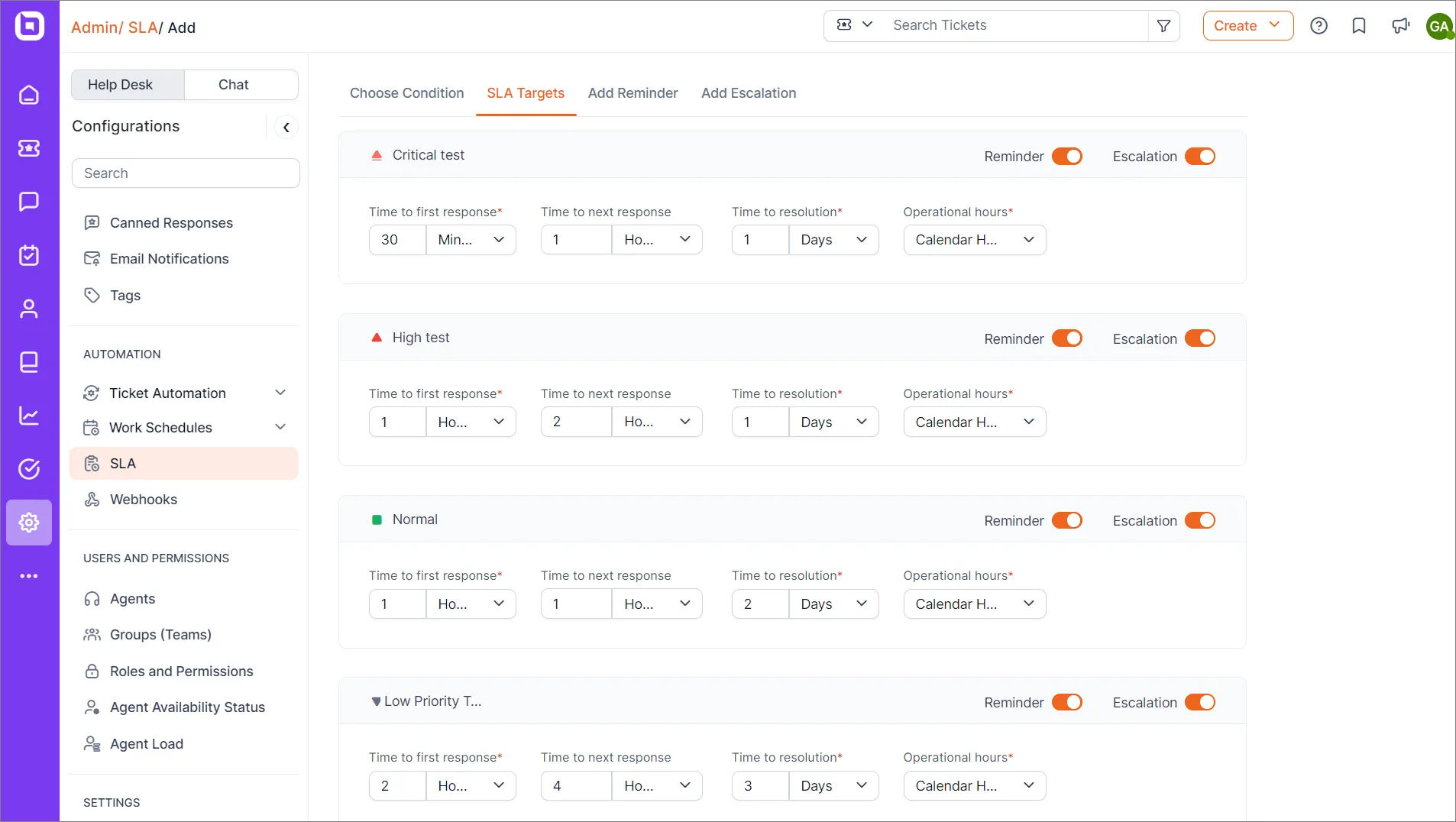
First, reminders are sent to support agents if due dates set by the service-level agreement are imminent.
If the agent knows they can’t meet the SLA requirement, they can have the ticket reassigned to someone else.
If the support agent fails to respond to or resolve a ticket within the SLA time limit, it will be considered a breach of the SLA.
The ticket will be automatically escalated to the designated supervisor, so they can reassign the ticket.
Analyze ticket data
Help desks commonly feature advanced analytics and reporting capabilities.
The analysis of ticket data provides us with a comprehensive understanding of how well the automated routing system is working.
By looking at metrics for how well your team is adhering to the SLA and how often rerouting is required, we can see how well the automated routing is working and adjust it, or other processes, as needed.
For example, if tickets requiring specific knowledge are frequently breaching SLA terms, this may indicate that another team member needs to be trained in that specific knowledge.

Have tickets auto-assigned even during non-business hours
Some smaller companies don’t have the capacity to provide 24/7 support. In this case, make sure to set up your automated ticket routing to continue to function outside business hours.
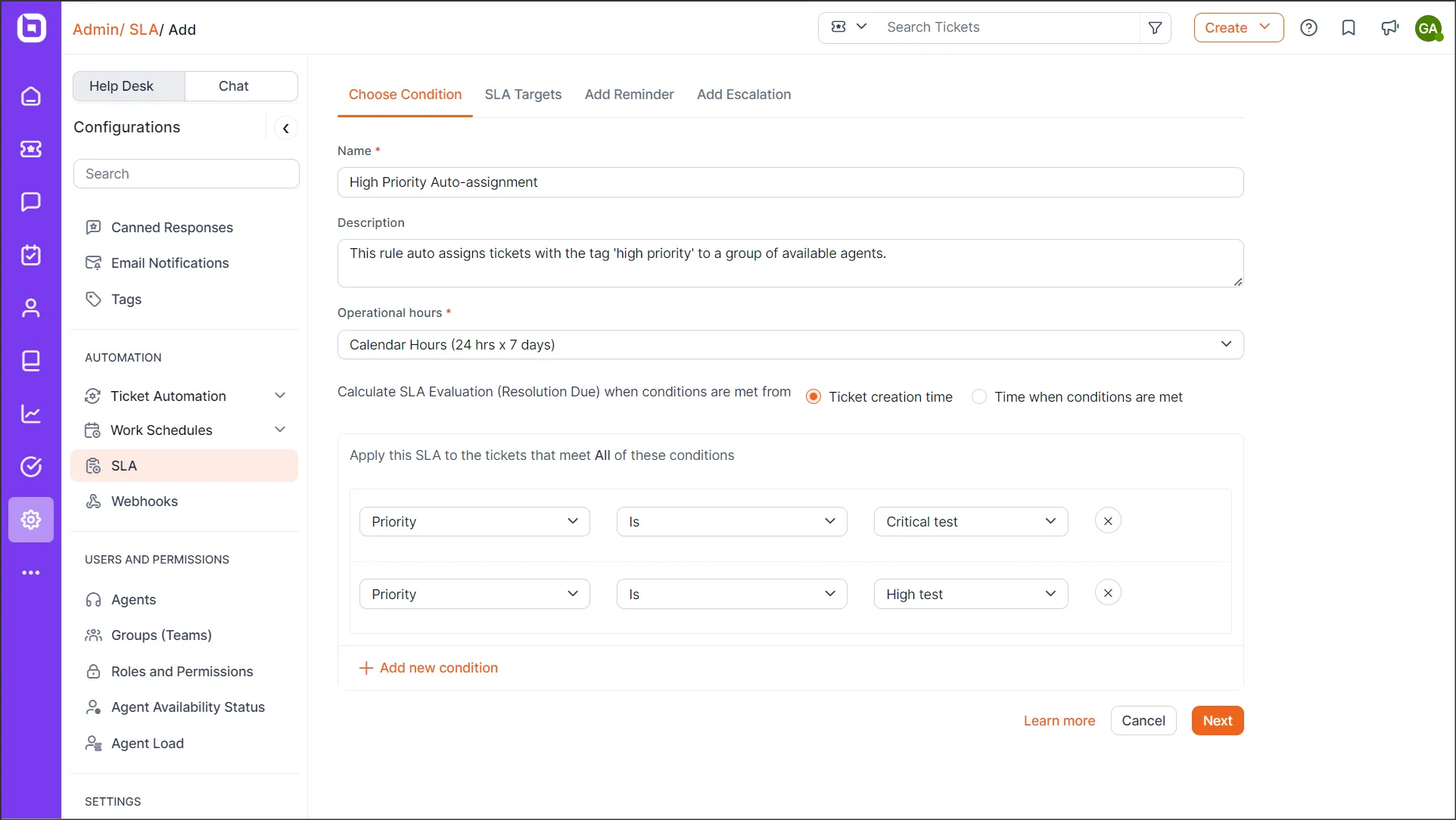
This may take some adjustments, though, like setting up notifications to be sent to managers for any tickets that could be considered emergencies.
This will allow support teams to address the tickets submitted during nonworking hours efficiently and still head off major trouble.
Automate ticket event execution
Event-triggered automation performs actions based on specific events. This is how you accomplish some of our other suggestions, and how you can speed up your workflow.
If an incoming ticket meets a particular condition that means, for example, that a manager needs to be notified, you can set triggers to do this automatically.
Some of the ticket events you can trigger include:
- Set status
- Add tags
- Remove tag
- Add watcher
- Add CC
- Remove CC
- Set subject
- Set priority
- Set assignee
- Send email to users
- Send email to group
Give priority to tickets based on their urgency
Most support systems allow businesses to prioritize tickets according to their urgency or severity.
Instead of setting up your support team to do tickets first-come-first-serve, higher priority tickets should be completed first to ensure that critical issues are promptly addressed and resolved.
Your SLA can often be set up to have different deadlines for different priority levels.
This sometimes is a balancing act, as low-priority tickets still need to be completed in a reasonable time.
When your department receives a surge of high-priority issues, you should have a protocol in place to ensure both that all tickets are eventually addressed and that supervisors don’t spend all their time reassigning tickets that become overdue.
What are the benefits of automated ticket routing?
Implementing an automated ticket routing has many advantages for your business:
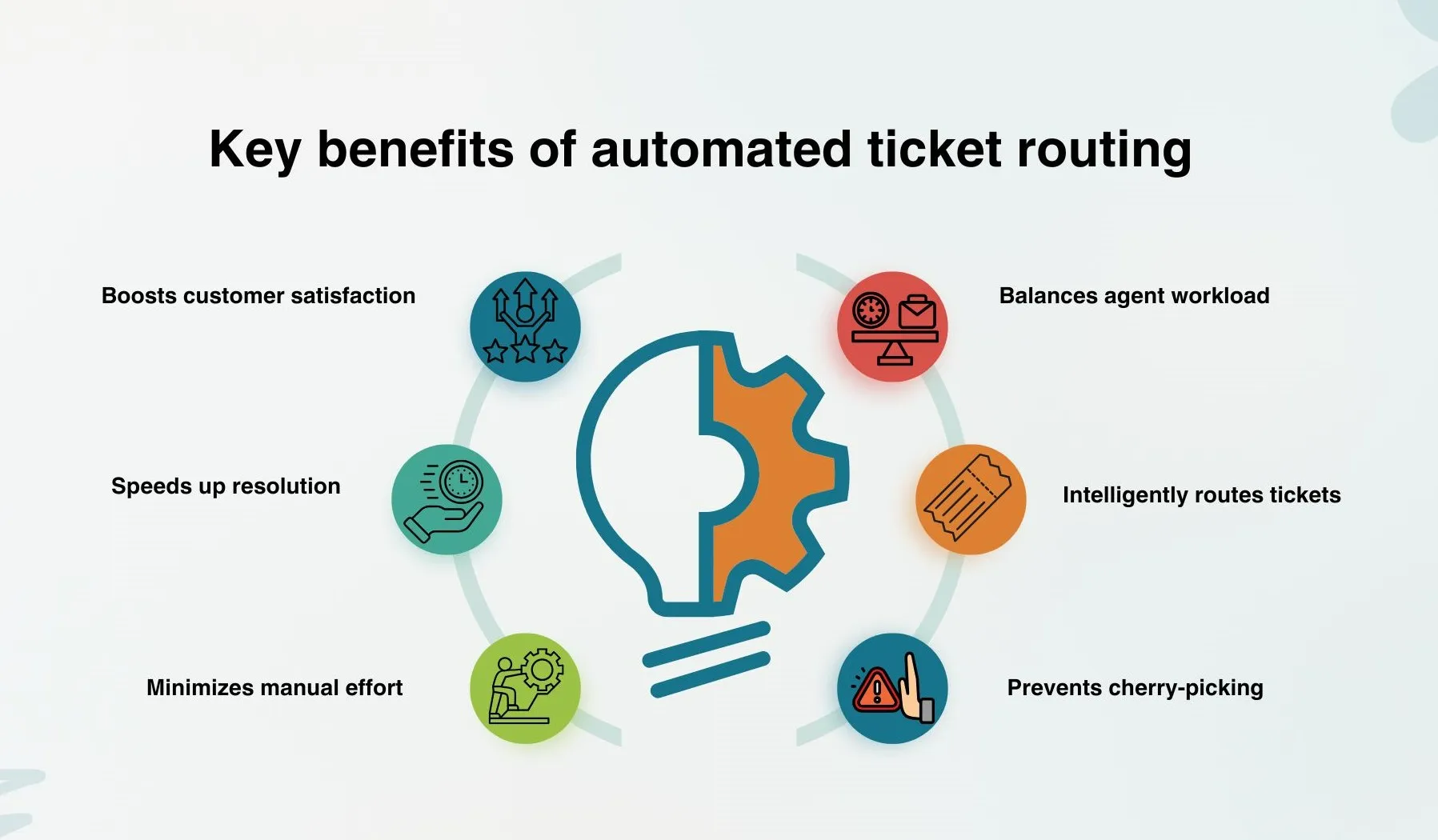
- Balances workload among support agents: Automated ticket routing enables organizations to make the most efficient use of their resources.
- Distributes tickets intelligently to prevent backlog and ensure all tickets are resolved.
- Prevents support teams from cherry picking the tickets: This minimizes the chances of tickets being overlooked, thereby improving overall ticket management efficiency.
- Minimizes the need for manual intervention: The fundamental purpose behind automated ticket routing is to reduce the need for manual involvement in ticket allocation drastically, reducing the chance of mistakes and increasing productivity.
- Reduces ticket resolution time: Implementing automated ticket routing streamlines internal workflows, reduces effort spent on ticket distribution, and promotes collaboration, thereby improving ticket resolution times.
- Enhance customer satisfaction: Automated ticket routing increases swift, accurate, and punctual responses for customers, leading to a gratifying user experience.
In conclusion, the satisfaction of your clients and productivity of your support team will both improve with an automated ticket routing feature.
Boost customer satisfaction with the ticket routing system
Statistics from Zippia show that after experiencing excellent customer service, 93% of customers are inclined to make repeat purchases from a company.
When customers receive quick replies to their inquiries, this great service enhances their trust in the company or organization.
By embracing automated ticket routing, organizations can significantly improve their ticket management processes, resulting in enhanced customer satisfaction and a streamlined workflow.
BoldDesk simplifies it all, making it easier for you to assign tickets automatically to qualified support agents and reduce response and resolution times.
Check out our free trial, where you will see how BoldDesk’s automatic ticket routing feature can enhance your support process. Or contact us to book a live demo and see how you can customize BoldDesk to meet your business needs.
For any questions regarding BoldDesk, feel free to reach out to the BoldDesk support team.
Related articles
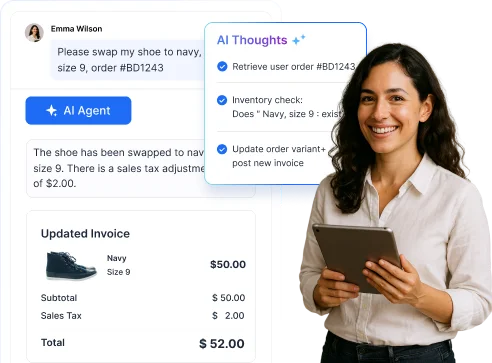


















 Email Ticketing System
Email Ticketing System Shared Inbox Software
Shared Inbox Software Multi Brand Help Desk
Multi Brand Help Desk Internal Help Desk Software
Internal Help Desk Software Trouble Ticketing Software
Trouble Ticketing Software Mobile Help Desk
Mobile Help Desk 









